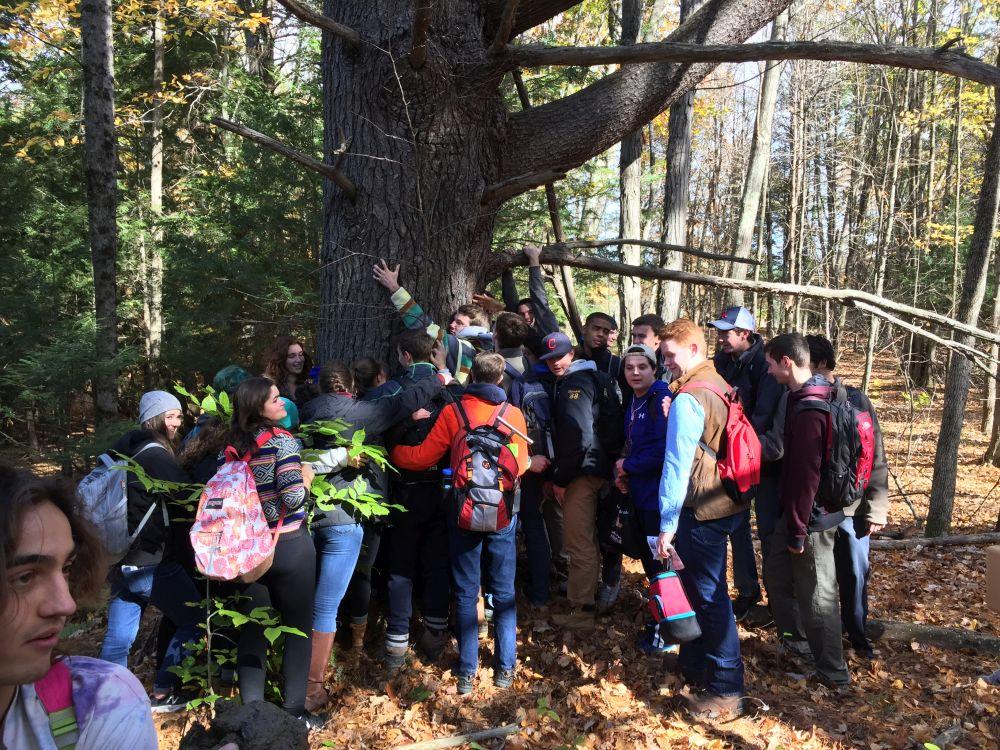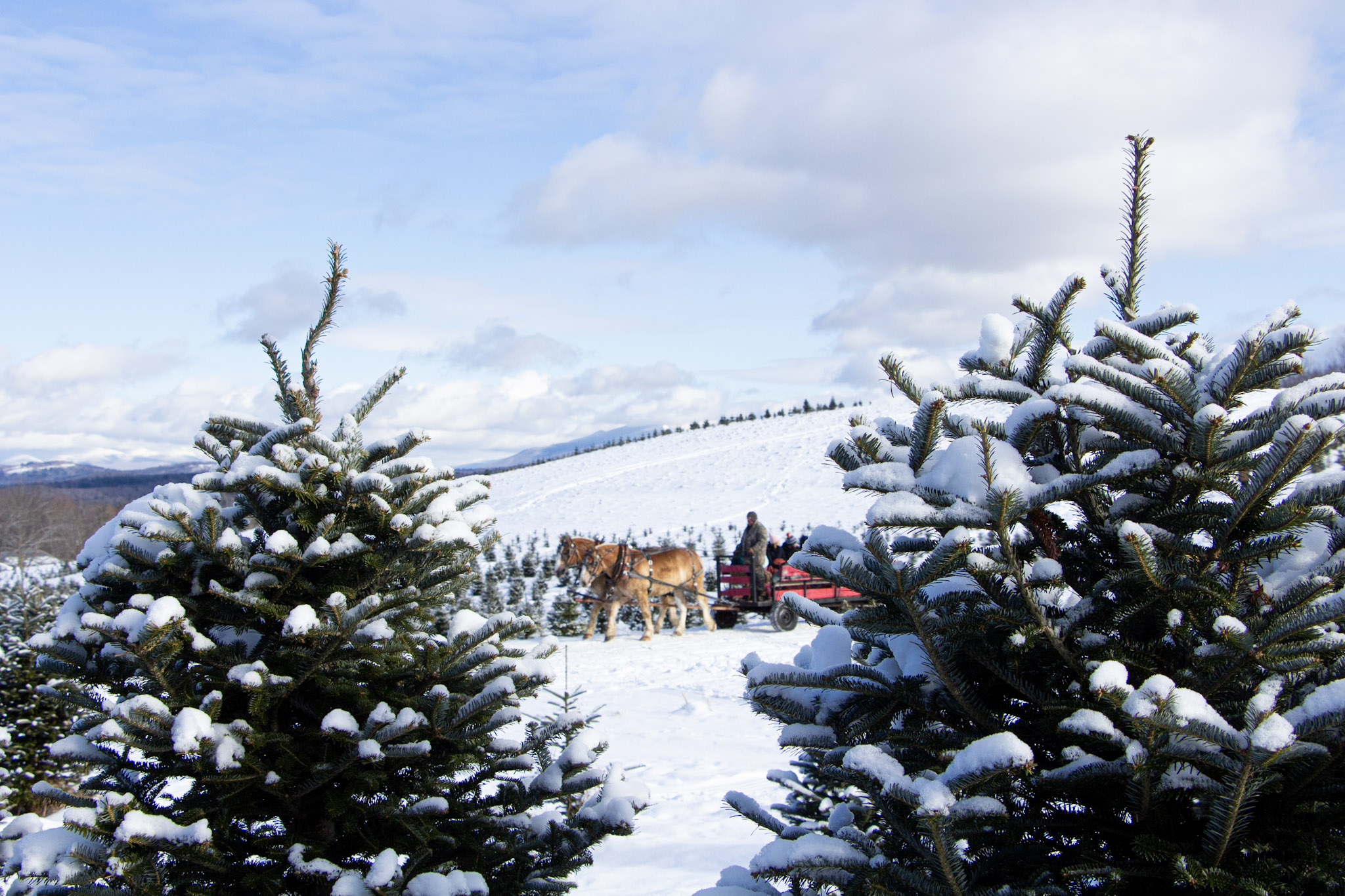Forest and fields an ideal lab for ecology and nature writing classes
- Tags:
- Education,
- Powder Major's Forest
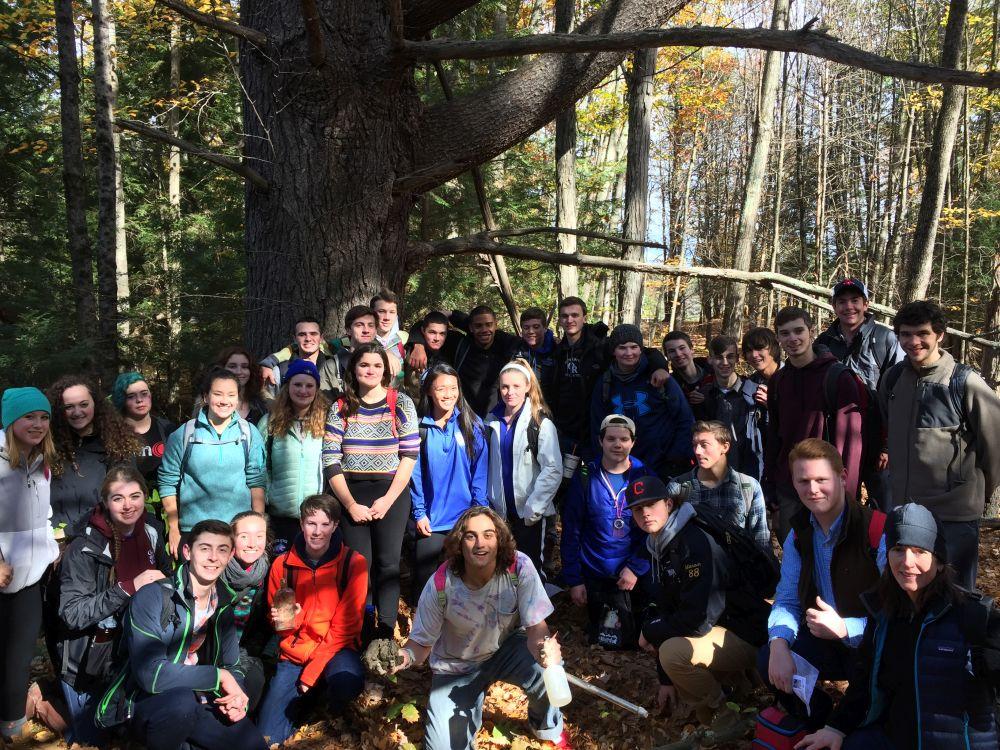
Oyster River students pose at a wolf pine.
Oyster River HIgh School students in Jon Bromley's Ecology classes and in Kara Sullivan's Nature Writing classes visited the Powder Major Forest on October 26 for a field laboratory of ecological investigation and written nature journal exercises. The Powder Major forest owned by the Goss Family in Madbury, Durham and Lee is the Forest Society's highest priority land conservation campaign. The forest and farmlands include significant historical and natural resources and provide an excellent outdoor classroom for the nearby regional high school students. Learn more about the protection of the Powder Major's Farm and Forest here: https://www.forestsociety.org/project/conserve-powder-majors-farm-and-f…

Beginning from the Tibbetts Field soccer field complex in Madbury, students brought trays with measuring tools and resources including compasses, soil probes, measuring tapes, field notebooks and resource guides to aid in the investigation of forest communities found at the Powder Major's Farm and Forest.
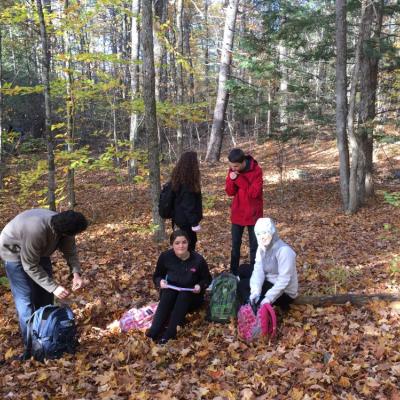
Students worked in groups of four to measure and establish temporary study plots to identify, count and measure tree species and record notes regarding plant communities or possible wildlife habitats. Jon Bromley dug a temporary soil pit to show the various organic and inorganic soil horizons and soil types. The students were asked to compare and contrast forests at the Powder Major's Farm with those of the "Oyster River Natural Area" at their hIgh school.
Discussions during the tour included invasive, exotic plant species, wildlife habitats and cultural history. We visited the "Council Rock" near the open fields of the farm. We hiked to a mature pine-oak forest for a nature journaling exercise and lunch in the field.
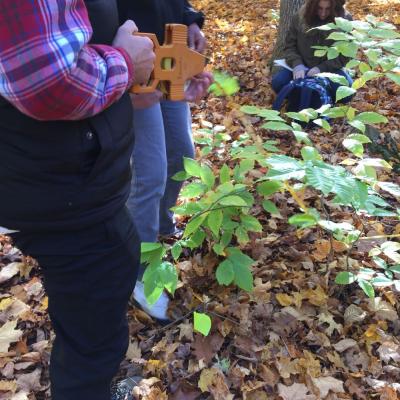
After lunch we hiked to a beaver flowage along Dube Brook and visited the historic remains of the "Dishwater Mill" site in Lee, on the Oyster River near the Bent Nail Bridge crossing.
The return hike traversed mature white pine and hemlock forests. The group paused for a photo and a little earnest tree hugging at a large wolf pine along an ancient boundary line and former pasture edge. The investigations revealed distinct forest communities, wetlands and excellent wildlife habitat opportunities resulting from forests that developed during different eras dating from the pre-Colonial farming practices of the Abenaki people to the present day.
